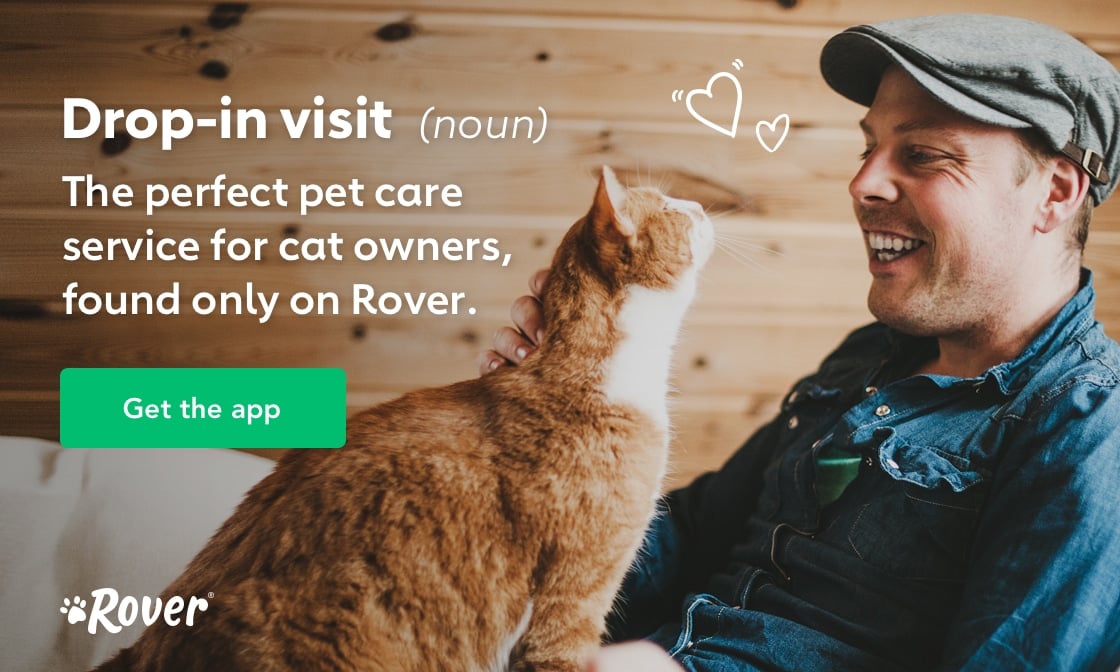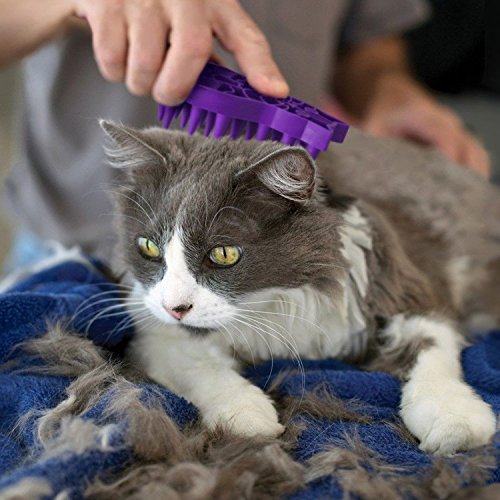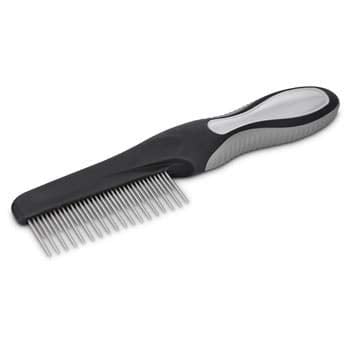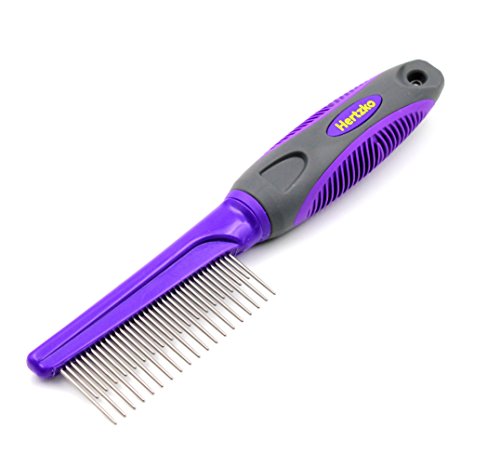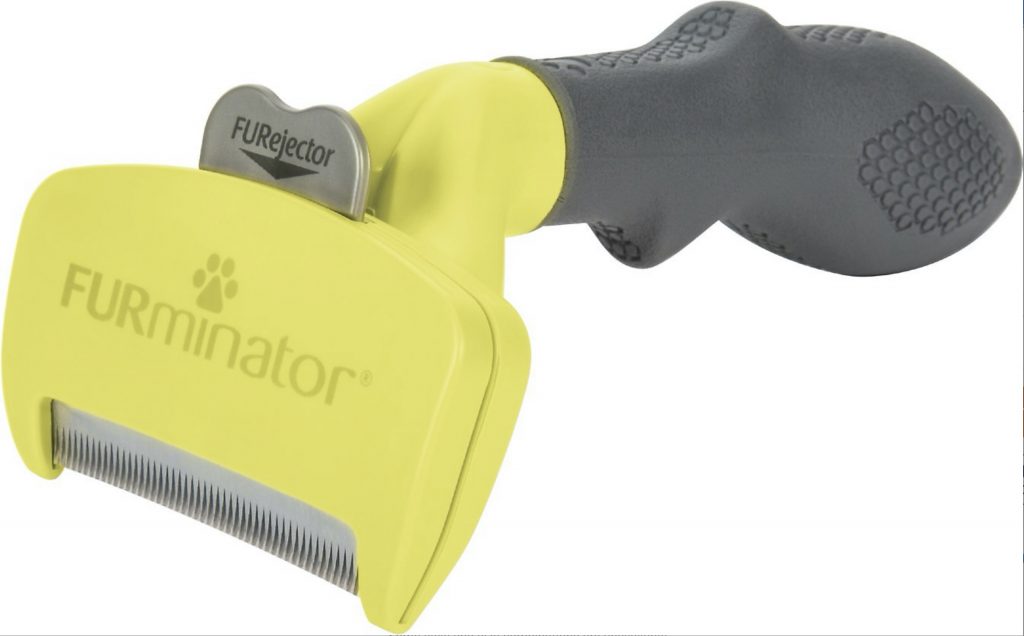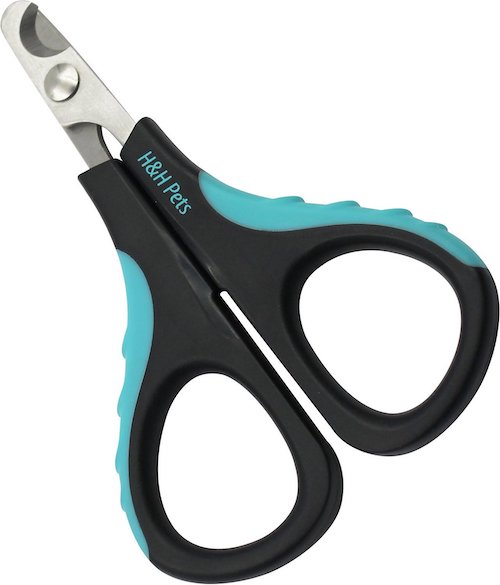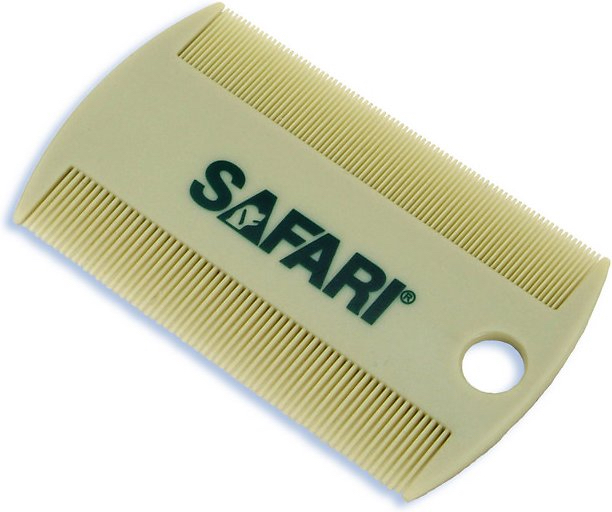- This post contains affiliate links. Read more here.
If your cat enjoys getting petted, you’re already on the right track for making grooming a part of their daily ritual. Not only will your kitty look sleek and elegant, but regular grooming, with cat brushes, combs, and other useful tools, will reduce shedding. It will also prevent your kitty from ingesting fur that often comes right back up as hairballs. It’s a win-win!
Some kitties need a bit more grooming attention than others. Most long-haired cats need daily care to avoid fur matting. Older cats, as they lose flexibility, may not do as good a job of grooming themselves as they once did. You can make their lives more comfortable by setting up regular grooming sessions, slowly acclimating your cat to the routine and tools.
We asked Rose Silcox-Rither, Certified Master Groomer and owner of the Seattle-area company Better Kitty, for tips on basic grooming techniques and useful tools. We’ve also found some of the best cat brushes, combs, and grooming tools to delight you and your cat.
Cat Grooming Basics: An Expert Weighs In
“Fortunately, you can buy all the tools you need to groom your cat for less than 30 dollars,” she says. “And grooming is a really good way to bond with your cat.”
For a short-haired cat, Silcox-Rither advises starting with a rubber cat brush (like a curry comb). Taking it in your hand, you massage the cat’s coat in soft circular motions. “You are loosing up all the fur that’s about to shed and bringing it, and any dirt or dander, to the surface,” she says. No surprise, most cats love being massaged.
When your cat is used to that step, you’re ready to start combing (or “raking”) to get all the debris out of the coat. With long-haired cats, you skip the rubber brush massage and go directly to raking.
The comb (or “rake” or “stripper”) removes all that loose hair and dirt. Silcox-Rither’s preferred tool is a simple metal comb with uneven teeth. “The longer teeth will get the lower layer of loose fur and the shorter one will get the top layer,” she says. “With a long-haired cat, this lets you get at the loose undercoat that the top coat is holding in place.”
Take note: Not all cat undercoat combs are alike. Silcox-Rither has qualms about using de-shedding tools that incorporate sharp blades, like the well-known Furminator. “You risk removing too much fur,” she says. “That can create matting.”
After combing your cat, finish the session with a slicker brush. These have very lightweight short wire bristles that can gather up the last of the loose hair. “The slicker brush leaves your cat looking shiny and sleek,” Silcox-Rither says. She likes slickers that have tiny caps on the ends of the wires to prevent irritation.
What if your cat already has tangles and mats? If you see just the beginning of mats, and your cat is used to being groomed, Silcox-Rither says you can employ the uneven-tooth comb to gently tease them apart. Serious mats are another story. Unless you have experience using de-matting tools with blades, she recommends going to a professional groomer. Scissors should be avoided. “If you think you have to get out scissors, it’s time to call for help,” she says.
Baths are also best left to the pros—and should be given very sparingly. “Cats are desert creatures,” says Silcox-Rither. “Their fur resists sand and dust, and they need the natural oils from their skin to stay healthy.”
The Best Cat Brushes and Combs
Even if your cat is a bit wary of extensive human contact, starting with just a few minutes of light grooming a day (and a treat or two) can have them begging to be brushed. In a few weeks you’ll be rewarded with a clean and comfortable cat—plus a lot of happy purring.
The inexpensive ZoomGroom from toy company Kong is the must-have tool for short- and medium-haired kitties. It’s a gentle rubber cat brush that will get your cat accustomed to being groomed. Use it to massage dirt and loose hair up to the surface—and to comb hair if your cat absolutely refuses to deal with other brushes or tools. Owners swear that even the most skeptical cat will warm to it.
Notable Features:
- Made of flexible, easy-to-grasp rubber
- Loose fur clings to the soft surface
- Gentle massage is a treat for most cats, transitioning them into grooming
This cat-scale comb will make for a comfortable grooming experience. The teeth have rounded tips that prevent injury to the cat, and the rubber handle is easy to grip.
Notable Features:
- Removes, dirt, debris, and loose fur from top and undercoat
- Distributes natural oils
Reach for this comb to groom a cat’s top coat and undercoat at the same time. The staggered teeth will capture loose undercoat fur that often remains hidden beneath the top coat. The rust-proof metal teeth are shorter near the handle than at the tip, making this comb easy to handle.
Notable Features:
- Grooms top and undercoat at the same time
- Smooth, rounded ends on the teeth prevent scratching the cat’s skin
This basic slicker cat brush is easy to use and comfortable for both the cat and the person doing the grooming. After you’ve removed dead hair and dirt with the rake, the slicker brush smooths fur and redistributes healthy oils, giving the coat an attractive sheen.
Notable Features:
- Comfortable non-slip handle with gel-foam coating
- Short, flexible pins protect your cat’s skin
This popular cat brush has slightly bent bristles and picks up loose fur without scratching your cat’s skin. The easy-to-reach button retracts the bristles, leaving a mat of removed fur for easy clean off. Store the brush with bristles retracted to prevent them from getting broken or twisted.
Notable Features:
- Recommended for all types of fur
- It’s self-cleaning—button control retracts bristles
- Curved bristles are designed to avoid pulling
Chances are you’ve heard about the Furminator deshedding tool. Developed by a professional pet groomer, this is one serious comb that removes the dead hair that leads to mats and tangles. Check out videos to ensure you are using it properly—gentle combing is all that is needed. Be sure to pick the right version for your cat’s size and particular fur type. Not intended for use on mats and tangles—choose a dematting tool or go to a groomer instead.
Notable Features:
- Size-specific: different models for different sized cats
- Hair-specific: different models for long- and short-haired cats
- Designed by a professional pet groomer
More Grooming Tips: Nails
Silcox-Rither says it’s understandable to be hesitant about trimming your cat’s claws. But if you want to give it a try, she recommends getting inexpensive clippers specially designed for cat claws—not ones for dogs or humans. “The less fancy, the better,” she says. Some clippers come with a guard to protect the quick (the root of the nail that has the blood supply), but those might give a false sense of security. “The length of a quick varies from cat to cat, and nail to nail,” Silcox-Rither says.
In some households, nail grooming includes applying glue-on nail caps for indoor cats with scratching issues. We’ve found that some cats will adapt readily to them. Otheer don’t like it any more than getting their nails trimmed.
These claw clippers are available in two sizes (small/medium is appropriate for most cats) and come with detailed instructions for use. The scissors shape and rubberized handles give you a good grip; semi-circular indentations in both blades allow you to see exactly where you going to cut.
Let’s Talk About Fleas
No discussion of cat brushes and grooming tools would be complete without a mention of the basic (and cheap!) flea comb. Run it gently through the fur at the neck and shoulders, moving toward the back and tail. Then check the removed hair for fleas, white flea eggs, and dark flea feces (often called “flea dirt”). Silcox-Rither notes that underarms and inside thighs are the warm places on cats where those pesky fleas are most likely to be hiding.
Not sure what you’re seeing? Take some of the hair and dirt you’ve combed out and sprinkle it with a few drops of water. If blood spots appear (from the flea dirt)—kitty has fleas. No need to panic, we’ve got you—check out this article on the best flea treatments for cats.
While Silcox-Rither doesn’t use flea combs for basic grooming, she does like the gentle plastic teeth for grooming the faces and ears of long-haired cats.
This inexpensive comb, ideal for short-haired cats, can be your first line of defense during spring and summer flea season. Use the soft flexible bristles on this plastic comb to coax any evidence of fleas from deep in your cat’s fur. Start with the wider teeth if your cat is wary of combing, then switch to the narrower teeth if necessary. Do not use this tool for dealing with tangled or matted hair.
With a little patience and the right tools, you and your cat can enjoy some regular bonding time while keeping kitty’s fur healthy and sleek. Happy grooming!
